- myFICO® Forums
- FICO Scoring and Other Credit Topics
- Understanding FICO® Scoring
- Re: Most Meaningful Thresholds
- Subscribe to RSS Feed
- Mark Topic as New
- Mark Topic as Read
- Float this Topic for Current User
- Bookmark
- Subscribe
- Mute
- Printer Friendly Page
Most Meaningful Thresholds
Is your credit card giving you the perks you want?
Browse credit cards from a variety of issuers to see if there's a better card for you.
- Mark as New
- Bookmark
- Subscribe
- Mute
- Subscribe to RSS Feed
- Permalink
- Report Inappropriate Content
Re: Most Meaningful Thresholds
@Anonymous wrote:
SJ Interesting. Perhaps you’re correct.
Apparently the MF frontend may be considered more reliable than any of the other frontends, per what we learned from the experts and we also know how it’s rounded now.
So we know a little more now than we did at the time of that thread. I’ve also learned some weird things about how HELOCs are calculated at EQ. I need to go back and read that thread and apply the knowledge and see what I come up with.
Do you have any of those past posts handy that you’re speaking of? I haven’t researched it again lately. but I remember before it was conflicting.
But I can conclusively say that logic has nothing to do with it! 😉 but I do admit it is logical.
No but I do remember that the first time I learned of it was from Thomas_Thumb.
Before that I had been reading, and believing, statements in this forum that closed accounts with balances are automatically treated as maxed out accounts with zero credit limits. I even passed that 'collective wisdom' along until I learned otherwise.
One of the problems with testing this is that few of us actually have closed accounts with balances. Normally if we close an account it's an account that's been zeroed out.
The way I learned of it in my personal sphere was through Bank of America's closing my accounts -- for reasons unknown but somehow related to 'market conditions' -- when I had substantial balances receiving the benefit of a 0% APR in 2 of the accounts (for all I know, maybe those were the reasons BOA cut me off). So I nursed those accounts along for quite awhile, and developed a clear understanding of how the closed-account-with-balance thing works.
If you have an account you're thinking of closing, why not leave a small balance on it and see what happens ![]()

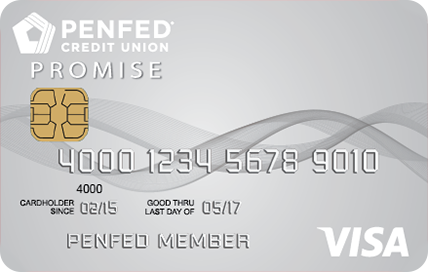

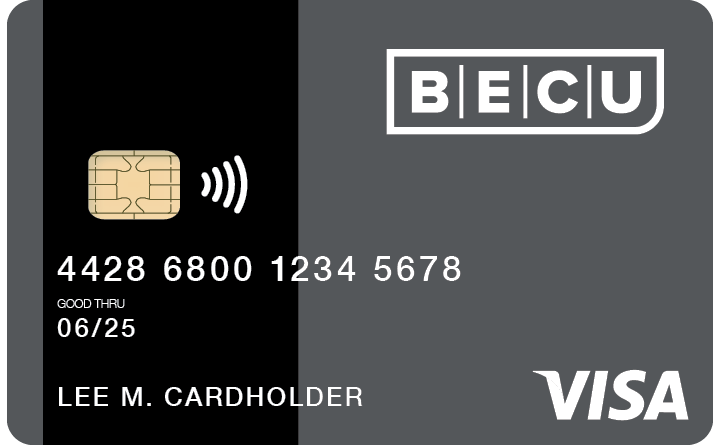








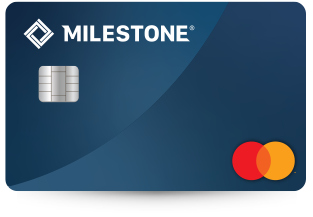
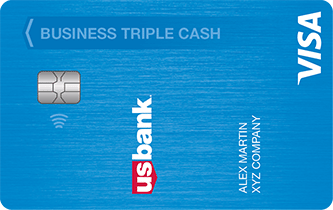







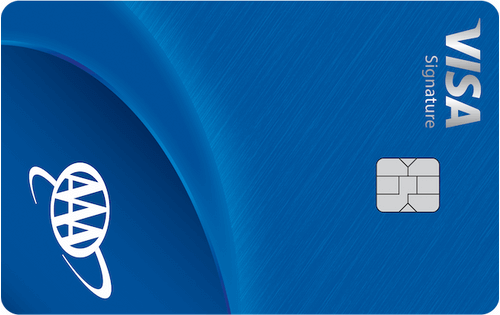





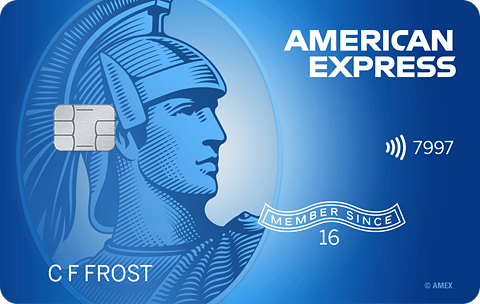




Total revolving limits 569520 (505320 reporting) FICO 8: EQ 699 TU 696 EX 673
- Mark as New
- Bookmark
- Subscribe
- Mute
- Subscribe to RSS Feed
- Permalink
- Report Inappropriate Content
Re: Most Meaningful Thresholds
@SouthJamaica wrote:
@Anonymous wrote:
SJ Interesting. Perhaps you’re correct.
Apparently the MF frontend may be considered more reliable than any of the other frontends, per what we learned from the experts and we also know how it’s rounded now.
So we know a little more now than we did at the time of that thread. I’ve also learned some weird things about how HELOCs are calculated at EQ. I need to go back and read that thread and apply the knowledge and see what I come up with.
Do you have any of those past posts handy that you’re speaking of? I haven’t researched it again lately. but I remember before it was conflicting.
But I can conclusively say that logic has nothing to do with it! 😉 but I do admit it is logical.No but I do remember that the first time I learned of it was from Thomas_Thumb.
Before that I had been readng, and believing, statements in this forum that closed accounts with balances are automatically treated as maxed out accounts with zero credit limits. I even passed that 'collective wisdom' along until I learned otherwise.
One of the problems with testing this is that few of us actually have closed accounts with balances. Normally if we close an account it's an account that's been zeroed out.
The way I learned of it in my personal sphere was through Bank of America's closing my accounts -- for reasons unknown but somehow related to 'market conditions' -- when I had substantial balances receiving the benefit of a 0% APR in 2 of the accounts (for all I know, maybe those were the reasons BOA cut me off). So I nursed those accounts along for quite awhile, and developed a clear understanding of how the closed-account-with-balance thing works.
If you have an account you're thinking of closing, why not leave a small balance on it and see what happens
@SouthJamaica yeah I don't go for that maxed out theory either. And you know what, I am thinking of closing one, so I just may do that, that's a good idea actually!
- Mark as New
- Bookmark
- Subscribe
- Mute
- Subscribe to RSS Feed
- Permalink
- Report Inappropriate Content
Re: Most Meaningful Thresholds
So if closed accounts with a balance aren't seen as a maxed out account by the algorithm, where the heck did all of this discussion (years, it seems) that they are seen as maxed out accounts come from? I mean, an individual account that's maxed out on a low utilization profile has got to impact what, 15-20 points even if the needle on aggregate doesn't move much right? It would seem to me that it would be a pretty obvious score-changing event if it did in fact count.
- Mark as New
- Bookmark
- Subscribe
- Mute
- Subscribe to RSS Feed
- Permalink
- Report Inappropriate Content
Re: Most Meaningful Thresholds
@Anonymous wrote:So if closed accounts with a balance aren't seen as a maxed out account by the algorithm, where the heck did all of this discussion (years, it seems) that they are seen as maxed out accounts come from? I mean, an individual account that's maxed out on a low utilization profile has got to impact what, 15-20 points even if the needle on aggregate doesn't move much right? It would seem to me that it would be a pretty obvious score-changing event if it did in fact count.
I would not be surprised if on occasion it actually did happen.
































Total revolving limits 569520 (505320 reporting) FICO 8: EQ 699 TU 696 EX 673
- Mark as New
- Bookmark
- Subscribe
- Mute
- Subscribe to RSS Feed
- Permalink
- Report Inappropriate Content
Re: Most Meaningful Thresholds
@Anonymous wrote:
@SouthJamaica wrote:
@Anonymous wrote:
SJ Interesting. Perhaps you’re correct.
Apparently the MF frontend may be considered more reliable than any of the other frontends, per what we learned from the experts and we also know how it’s rounded now.
So we know a little more now than we did at the time of that thread. I’ve also learned some weird things about how HELOCs are calculated at EQ. I need to go back and read that thread and apply the knowledge and see what I come up with.
Do you have any of those past posts handy that you’re speaking of? I haven’t researched it again lately. but I remember before it was conflicting.
But I can conclusively say that logic has nothing to do with it! 😉 but I do admit it is logical.No but I do remember that the first time I learned of it was from Thomas_Thumb.
Before that I had been readng, and believing, statements in this forum that closed accounts with balances are automatically treated as maxed out accounts with zero credit limits. I even passed that 'collective wisdom' along until I learned otherwise.
One of the problems with testing this is that few of us actually have closed accounts with balances. Normally if we close an account it's an account that's been zeroed out.
The way I learned of it in my personal sphere was through Bank of America's closing my accounts -- for reasons unknown but somehow related to 'market conditions' -- when I had substantial balances receiving the benefit of a 0% APR in 2 of the accounts (for all I know, maybe those were the reasons BOA cut me off). So I nursed those accounts along for quite awhile, and developed a clear understanding of how the closed-account-with-balance thing works.
If you have an account you're thinking of closing, why not leave a small balance on it and see what happens
@SouthJamaica yeah I don't go for that maxed out theory either. And you know what, I am thinking of closing one, so I just may do that, that's a good idea actually!
And if you do it, and it turns out to be treated as a maxed out account and all your scores plummet -- you can console yourself with how good it felt to prove me wrong about something, something you've never yet accomplished ![]()
































Total revolving limits 569520 (505320 reporting) FICO 8: EQ 699 TU 696 EX 673
- Mark as New
- Bookmark
- Subscribe
- Mute
- Subscribe to RSS Feed
- Permalink
- Report Inappropriate Content
Re: Most Meaningful Thresholds
@Anonymous wrote:
@credit8502020 wrote:
@Anonymous wrote:
10%, 30%, 50%, 70%, 90%, 100%. These are the recognized known revolving thresholds. There is also a 5% on young/thin scorecards. The magnitude of the awards varies by scorecard.
Since midpoint rounding is used, to be under a threshold you must be at <x-.5%, e.g. <9.5%, <29.5%, ect...@Anonymous Thank you! Ok. So don't use these for a dirty scorecard?
Aggregate - 9-29% utlization, etc.
Individual card - 29-49% utilization, etc.
Thank you! When calculating my aggregate utilization, am I also including the AU account as well? I just want to make sure I'm doing the correct calculation.
Credit Card 1 - $750 - Bal - $0
Credit Card 2 - $500 - Bal - $5
Closed (But not a charge off) - $10600 (CL), $3200 (BAL) - (First Goal: is $2968 - 28%)
AU - $3700 - Bal - $0
@credit8502020 The 9s were used before clarification that revealed the thresholds are actually on 10s. People were rounding incorrectly and that led to the error.
if you'd like to know the details on how to calculate utilization, go to the Scoring Primer linked in my signature, go to post 3 amounts owed, and there is a graphic that will tell you step-by-step how to calculate aggregate utilization and as for individual it's considered to start at 30%. The text will explain in detail.
The Primer will also explain how authorized user accounts are treated; they always count on the mortgage scores and they may or may not count in version 8 and 9.
@Anonymous Thank you!
- Mark as New
- Bookmark
- Subscribe
- Mute
- Subscribe to RSS Feed
- Permalink
- Report Inappropriate Content
Re: Most Meaningful Thresholds
@SouthJamaica wrote:
@Anonymous wrote:
@SouthJamaica wrote:
@Anonymous wrote:
SJ Interesting. Perhaps you’re correct.
Apparently the MF frontend may be considered more reliable than any of the other frontends, per what we learned from the experts and we also know how it’s rounded now.
So we know a little more now than we did at the time of that thread. I’ve also learned some weird things about how HELOCs are calculated at EQ. I need to go back and read that thread and apply the knowledge and see what I come up with.
Do you have any of those past posts handy that you’re speaking of? I haven’t researched it again lately. but I remember before it was conflicting.
But I can conclusively say that logic has nothing to do with it! 😉 but I do admit it is logical.No but I do remember that the first time I learned of it was from Thomas_Thumb.
Before that I had been readng, and believing, statements in this forum that closed accounts with balances are automatically treated as maxed out accounts with zero credit limits. I even passed that 'collective wisdom' along until I learned otherwise.
One of the problems with testing this is that few of us actually have closed accounts with balances. Normally if we close an account it's an account that's been zeroed out.
The way I learned of it in my personal sphere was through Bank of America's closing my accounts -- for reasons unknown but somehow related to 'market conditions' -- when I had substantial balances receiving the benefit of a 0% APR in 2 of the accounts (for all I know, maybe those were the reasons BOA cut me off). So I nursed those accounts along for quite awhile, and developed a clear understanding of how the closed-account-with-balance thing works.
If you have an account you're thinking of closing, why not leave a small balance on it and see what happens
@SouthJamaica yeah I don't go for that maxed out theory either. And you know what, I am thinking of closing one, so I just may do that, that's a good idea actually!
And if you do it, and it turns out to be treated as a maxed out account and all your scores plummet -- you can console yourself with how good it felt to prove me wrong about something, something you've never yet accomplished
@SouthJamaica it has never been my aim to prove you or anyone wrong. But you can't prove anyone wrong, if they don't take a position and always say I don't know.
However you didn't believe that balances were taken into account, but we now know they are. You held loans reassigned someone into a new account scorecard, but I discovered, and it has subsequently been confirmed repeatedly, that they do not. 😉 but you've also been right about things as well.
i'm just here to learn and help people, my friend, not to prove anyone wrong.
- Mark as New
- Bookmark
- Subscribe
- Mute
- Subscribe to RSS Feed
- Permalink
- Report Inappropriate Content
Re: Most Meaningful Thresholds
@credit8502020 wrote:
@Anonymous wrote:
@credit8502020 wrote:
@Anonymous wrote:
10%, 30%, 50%, 70%, 90%, 100%. These are the recognized known revolving thresholds. There is also a 5% on young/thin scorecards. The magnitude of the awards varies by scorecard.
Since midpoint rounding is used, to be under a threshold you must be at <x-.5%, e.g. <9.5%, <29.5%, ect...@Anonymous Thank you! Ok. So don't use these for a dirty scorecard?
Aggregate - 9-29% utlization, etc.
Individual card - 29-49% utilization, etc.
Thank you! When calculating my aggregate utilization, am I also including the AU account as well? I just want to make sure I'm doing the correct calculation.
Credit Card 1 - $750 - Bal - $0
Credit Card 2 - $500 - Bal - $5
Closed (But not a charge off) - $10600 (CL), $3200 (BAL) - (First Goal: is $2968 - 28%)
AU - $3700 - Bal - $0
@credit8502020 The 9s were used before clarification that revealed the thresholds are actually on 10s. People were rounding incorrectly and that led to the error.
if you'd like to know the details on how to calculate utilization, go to the Scoring Primer linked in my signature, go to post 3 amounts owed, and there is a graphic that will tell you step-by-step how to calculate aggregate utilization and as for individual it's considered to start at 30%. The text will explain in detail.
The Primer will also explain how authorized user accounts are treated; they always count on the mortgage scores and they may or may not count in version 8 and 9.
@Anonymous Thank you!
@credit8502020 you are very welcome!
- Mark as New
- Bookmark
- Subscribe
- Mute
- Subscribe to RSS Feed
- Permalink
- Report Inappropriate Content
Re: Most Meaningful Thresholds
@SouthJamaica wrote:
@credit8502020 wrote:Hi All!
I have a closed credit card with a balance that I am paying off.I recall hearing mention of different thresholds that will impact your scores the most.Can someone share with me the different thresholds for credit card utilization? I don't recall where I read it exactly.Ex. 30%, 10%, less than 9%, etc.30% is a major threshold in individual account utilization. Best to be at 28% or less. Since it's a closed account, pay it off as fast as you can.
@SouthJamaica Thank you! Is there a reason you’re mentioning 28% instead of 29%...since it’s still under 30%? Is it because of rounding up?
- Mark as New
- Bookmark
- Subscribe
- Mute
- Subscribe to RSS Feed
- Permalink
- Report Inappropriate Content
Re: Most Meaningful Thresholds
@Anonymous wrote:
@SouthJamaica wrote:
@Anonymous wrote:
@SouthJamaica wrote:
@Anonymous wrote:
SJ Interesting. Perhaps you’re correct.
Apparently the MF frontend may be considered more reliable than any of the other frontends, per what we learned from the experts and we also know how it’s rounded now.
So we know a little more now than we did at the time of that thread. I’ve also learned some weird things about how HELOCs are calculated at EQ. I need to go back and read that thread and apply the knowledge and see what I come up with.
Do you have any of those past posts handy that you’re speaking of? I haven’t researched it again lately. but I remember before it was conflicting.
But I can conclusively say that logic has nothing to do with it! 😉 but I do admit it is logical.No but I do remember that the first time I learned of it was from Thomas_Thumb.
Before that I had been readng, and believing, statements in this forum that closed accounts with balances are automatically treated as maxed out accounts with zero credit limits. I even passed that 'collective wisdom' along until I learned otherwise.
One of the problems with testing this is that few of us actually have closed accounts with balances. Normally if we close an account it's an account that's been zeroed out.
The way I learned of it in my personal sphere was through Bank of America's closing my accounts -- for reasons unknown but somehow related to 'market conditions' -- when I had substantial balances receiving the benefit of a 0% APR in 2 of the accounts (for all I know, maybe those were the reasons BOA cut me off). So I nursed those accounts along for quite awhile, and developed a clear understanding of how the closed-account-with-balance thing works.
If you have an account you're thinking of closing, why not leave a small balance on it and see what happens
@SouthJamaica yeah I don't go for that maxed out theory either. And you know what, I am thinking of closing one, so I just may do that, that's a good idea actually!
And if you do it, and it turns out to be treated as a maxed out account and all your scores plummet -- you can console yourself with how good it felt to prove me wrong about something, something you've never yet accomplished
@SouthJamaica it has never been my aim to prove you or anyone wrong. But you can't prove anyone wrong, if they don't take a position and always say I don't know.
However you didn't believe that balances were taken into account, but we now know they are. You held loans reassigned someone into a new account scorecard, but I discovered, and it has subsequently been confirmed repeatedly, that they do not. 😉 but you've also been right about things as well.i'm just here to learn and help people, my friend, not to prove anyone wrong.
I know, I was just kidding.
































Total revolving limits 569520 (505320 reporting) FICO 8: EQ 699 TU 696 EX 673